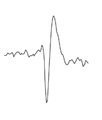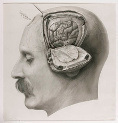Tom Stafford's Blog, page 28
October 30, 2014
Social psychology has lost its balance
 The New Yorker has an interesting article about a lack of political diversity in social psychology and how that may be leading to a climate of bias against conservative researchers, ideas and the evidence that might support them.
The New Yorker has an interesting article about a lack of political diversity in social psychology and how that may be leading to a climate of bias against conservative researchers, ideas and the evidence that might support them.
Some of the evidence for a bias against conservative thinking in social psychology goes back some years, and the article gives a good account of the empirical work as well as the debate.
However, the issue was recently raised again by morality researcher Jonathan Haidt leading to a renewed reflection on the extent of the problem.
There is a case to be made that, despite the imbalance, no formal changes need to be made, and that, on the whole, despite its problems, social psychology continues to function remarkably well and regularly produces high-quality research. Controversial work gets done. Even studies that directly challenge the field—like Haidt’s—are publicized and inspire healthy debate…
And yet the evidence for more substantial bias, against both individuals and research topics and directions, is hard to dismiss—and the hostility that some social psychologists have expressed toward the data suggests that self-correction may not be an adequate remedy.
A timely reminder of the eternal truth that bias is entirely non-partisan, and if you’ve not heard it before, a pointer to a great BBC Radio documentary that outlines how it works equally across people of every political stripe.
Link to ‘Is Social Psychology Biased Against Republicans?’


October 29, 2014
Quasi-stability
Yesterday, before I got here, my dad was trying to fix an invisible machine. By all accounts, he began working on the phantom device quite intently, but as his repairs began to involve the hospice bed and the tubes attached to his body, he was gently sedated, and he had to leave it, unresolved.
This was out-of-character for my father, who I presumed had never encountered a machine he couldn’t fix. He built model aeroplanes in rural New Zealand, won a scholarship to go to university, and ended up as an aeronautical engineer for Air New Zealand, fixing engines twice his size. More scholarships followed and I first remember him completing his PhD in thermodynamics, or ‘what heat does’, as he used to describe it, to his six-year-old son.
When he was first admitted to the hospice, more than a week go, he was quite lucid – chatting, talking, bemoaning the slow pace of dying. “Takes too long,” he said, “who designed this?” But now he is mostly unconscious.
Occasionally though, moments of lucidity dodge between the sleep and the confusion. “When did you arrive?” he asked me in the early hours of this morning, having woken up wanting water. Once the water was resolved he was preoccupied about illusory teaspoons lost among the bedclothes, but then chatted in feint short sentences to me and my step-mum before drifting off once more.
Drifting is a recent tendency, but in the lucidity he has remained a proud engineer. It’s more of a vocation, he always told his students, than a career.
Last week, when the doctors asked if he would speak to medical trainees, he was only too happy to have a final opportunity to teach. Even the consultants find his pragmatic approach to death somewhat out of the ordinary and they funnelled eager learners his way where he engaged with answering their questions and demonstrating any malfunctioning components.
“When I got here”, he explained to them, “I was thermodynamically unstable but now I think I’m in a state of quasi-stability. It looks like I have achieved thermal equilibrium but actually I’m steadily losing energy.”
“I’m not sure”, I said afterwards, “that explaining your health in terms of thermodynamics is exactly what they’re after.”
“They’ll have to learn,” he said, “you can’t beat entropy.”


October 24, 2014
Spike activity 24-10-2014
Quick links from the past week in mind and brain news:

A Victorian lunatic asylum begins to reveal its secrets. The Wellcome Library now has the first of many digitised asylum records online.
Narratively has an excellent piece on legendary San Francisco eccentric Emperor Norton.
The marketers latest fad – make it seem it’s a feminist social campaign – has been taken on as an attempt to sell a rejected antidepressant as a treatment for the invented ‘female sexual dysfunction’. In-depth and important article in the BMJ.
Time magazine has a special features that looks inside the quasi-legal science-free world of medical marijuana for children.
Russian artist cuts off earlobe to protest use of forced psychiatry on dissidents reports The Guardian.
BBC Radio 3 has an interesting doco called Como Songs about families’ experience of having a loved-one in a coma or coma-like state.
Decades of lie detection research has been unrealistic. Interesting piece from the BPS Research Digest.
IEEE Spectrum magazine has an interview with machine learning ninja Michael Jordan who grit blasts the hype off big data and deep learning.
The latest RadioLab is on the wonderful vagaries of translation / traducción / tradução.


October 15, 2014
A Rush of Blood to the Brain
 An article from Culture, Medicine, and Psychiatry that discusses the concept of ‘moral disability’ and brain trauma in Victorian times includes a fascinating section on what was presumably thought to be the science of ‘knocking some sense into the brain’.
An article from Culture, Medicine, and Psychiatry that discusses the concept of ‘moral disability’ and brain trauma in Victorian times includes a fascinating section on what was presumably thought to be the science of ‘knocking some sense into the brain’.
The piece is by medical historian Brady Shillace who researches Victorian scientific ideas and how they affected society.
Sadly, the article is locked (quite rightly, humanities can kill if not used correctly) but this is the key section:
While eighteenth-century French philosopher François Bichat had suggested that a blow suffered to one side of the head might restore the good senses of the disordered side, Wigan’s work suggested that “where such mental derangement depends on inflammation, fever, impoverished or diseased blood, or other manifestly bodily disease,” it could be cured by actively seeking and rooting out the source, by trephining the brain or otherwise subduing the offending hemisphere… The Lancet was replete with unusual cases of brain trauma and its curious results, many that seemed to support Wigan in his assumptions about physical trauma, variously applied.
I performed a survey from 1839 to 1858 and discovered a case of brain trauma in numerous issues, eight of which were particularly revelatory of the unusual nature of the brain and its hemispheres. The 1843 account of Dr. Peter S. Evans, “Derangement of the Brain by a Sudden Shock and Its Recovery,” claims that a boy was beaten into idiocy, and then beaten out of it again (regaining his full senses after being whipped by a cart driver). One of Wigan’s cases describes a young gentleman in a “paroxysm of maniacal delirium” who shot himself sane.
Not recommended.
Link to locked article in Culture, Medicine, and Psychiatry


October 5, 2014
Hallucinating astronauts
 I’ve got a piece in The Observer about the stresses, strains and mind-bending effects of space flight.
I’ve got a piece in The Observer about the stresses, strains and mind-bending effects of space flight.
NASA considers behavioural and psychiatric conditions to be one of the most significant risks to the integrity of astronaut functioning and there is a surprisingly long history of these difficulties adversely affecting missions.
Perhaps more seriously, hallucinations have been associated with the breakdown of crew coherence and space mission stress. In 1976, crew from the Russian Soyuz-21 mission were brought back to Earth early after they reported an acrid smell aboard the Salyut-5 space station. Concerns about a possible fluid leak meant the replacement crew boarded with breathing equipment, but no odour or technical problems were found. Subsequent reports of “interpersonal issues” and “psychological problems” in the crew led Nasa to conclude the odour was probably a hallucination. Other Russian missions were thought to be have been halted by psychological problems, but the US space programme has not been without difficulties. During the Skylab 4 mission, long hours, exhaustion and disagreements with mission control resulted in the crew switching off their radio and spending a day ignoring Nasa while watching the Earth’s surface pass by.
The piece also tackles a curious form of hallucination caused by cosmic rays and the detrimental effects of zero-gravity of brain function, as well as some curious Freudian theories from pre-space flight 1950s about the potential psychological consequences of leaving ‘Mother Earth’.
Enjoy!
Link to Observer article on psychological challenges of astronauts.


October 4, 2014
Spike activity 05-10-2014
Quick links from the past week in mind and brain news:

Dropping science: neuroscientists throw down epic / excruciating rap battle on Twitter. Bring the line noise.
The New Yorker has an interesting piece on the neuroscientific legacy of the Vietnam War. In neuroscience terms, it was America’s World War One.
The latest edition of Nature NeuroPod is particularly good: psychosis, detecting animacy, network theory for brains.
Livescience covers an interesting study finding that the uncanny valley effect is affected by loneliness.
The US Government spend $300 million on BRAIN initiative projects and the news coverage is remarkably poor. Here’s the best of a bad bunch: reporting from MIT Tech Review.
Nautilus has some postcards from the edge of consciousness. On the science of sensory deprivation.
Guy breaks captcha on Silk Road 2.0 and scrapes the site for trends in the dark net drug trade.
Slate covers ‘Sluggish cognitive tempo’ – another in a long-line of vague and unhelpful psychiatric disorder-hopefuls to sell medication for.
A peculiar prevalence of p-values below p=.05 in Psych Science? Not so fast. Great piece from Daniel Lakens blog.
Most People With Addiction Simply Grow Out of It: Why Is This Widely Denied? Excellent piece in Substance.
This week in bad neuroscience reporting: beer and curry ‘heal the brain’. Next week: wanking and funfairs cure Parkinson’s disease.


October 2, 2014
A review of Susan Greenfield’s “Mind Change”
 I was asked to write a review of Susan Greenfield’s new book “Mind Change” for the October edition of Literary Review magazine which has just been published.
I was asked to write a review of Susan Greenfield’s new book “Mind Change” for the October edition of Literary Review magazine which has just been published.
You can read the review in the print edition and I did have the full text posted here but the good folks at the magazine have also put it online to read in full, so do check it out at the link below.
Mind Change marshals many published sources to address these claims. However, this provides little scientific insight owing to Greenfield’s difficulty with synthesising the evidence in any meaningful sense, while she also makes some glaring mistakes in her interpretation of it. Although she makes much of her use of peer-reviewed evidence, surveys done by companies for marketing campaigns are often given the same weight as scientific studies and opinions from self-appointed pundits as those of specialists.
As an end-note, what’s most interesting is that Greenfield is essentially making an argument about public health but doesn’t really have the conceptual tools to do so and consequently doesn’t seem to understand how, and how strongly, to draw real world inferences from different types of evidence.
However, in terms of Greenfield’s evolution, she is at least tackling some of the relevant evidence, but this really isn’t up to a standard that merits any of the media attention it gets.
Link to review of “Mind Change”.


September 27, 2014
Buggin’ Out
Sociology journal Transition has a fascinating article giving a history of the surprisingly frequent appearance of schizophrenia in rap music.
In psychiatric circles, schizophrenia is considered a serious mental illness that causes delusions, hallucinations, and social withdrawal. But in rap, schizophrenia means something else: a mode of defiance, a boast, or a threat. The term appears frequently when describing competition between rappers. In “Speak Ya Clout,” the duo Gang Starr rhymes that they are “schizophrenic with rhyme plus we’re well organized” as a way of warning that they are “stepping rugged and tough.”
Schizophrenia also enhances claims of competitive violence—in “16 on Death Row,” 2Pac famously warned that, “I’m kind of schizophrenic, I’m in this shit to win it.” Schizophrenia also helps rappers describe collective responses to racism or injustice. In the multi-artist hit “Everything,” Busta Rhymes calls for action by rapping, “Panic and schizophrenic, sylvy-Atlantic / Wrap up your face in ceramic, goddamit we controllin the planet.”…
Yet something much larger than mere sampling is at play in rap’s use of the terms schizophrenia and schizophrenic. Rap lyrics are the latest installments in a political debate that has evolved over the past century (at least) regarding the contested relationships between race, madness, violence, and civil rights… At stake is a series of existential and material questions about the causes, actions, and implications of sanity itself.
The article is locked but a pdf has made its way online.
It’s a fantastic piece that traces how schizophrenia and psychosis have become deeply politicised, racially charged concepts.
They were used to pathologise black civil rights protesters, whose demand for equal rights were considered part of a ‘protest psychosis’, and have been used in civil rights discourse to symbolise the effects of a racist society.
And this is how it seems to have ended up as a borrowed badge of pride for generations of MCs.
The piece is by psychiatrist Jonathan Metzl who also wrote the definitive history of the so-called ‘protest psychosis’ and it serves as a great introduction to an important chapter in the bitter history of race, psychiatry and psychosis.
Link to locked Transition article in JSTOR.
pdf of full-text.


Spike activity 26-09-2014
Quick links from the past week in mind and brain news:

Why most scientists don’t take Susan Greenfield seriously. A serious rebuttal for some poor scientific claims over at BishopBlog.
The Guardian has a good profile of food and flavour scientist Charles Spence who specialises in sensory integration.
Couvade syndrome: some men develop signs of pregnancy when their partners are pregnant. The Conversation has a piece on a genuinely intriguing condition.
The Chronicle of Higher Education has an interesting piece on Why Freud Still Haunts Us.
‘GCHQ employs more than 100 dyslexic and dyspraxic spies’ according to some covert recruiting PR slipped out as news in The Telegraph.
The New York Times has a retrospective on the life and times of Prozac.
There’s an excellent concise introduction to RDoC in Acta Psychiatrica Scandinavia that is essential reading if you’re interesting in the future of psychiatric neuroscience.
Rewriting the Rules has an interesting reflection from relationship psychologist Meg Barker on 10 years of researching open relationships and non-monogamy.
Pipe-wielding philosopher of mind Pete Mandik occasionally puts out great educational videos. This on Daniel Dennett’s ‘multiple drafts’ theory of consciousness is great.


September 24, 2014
Why our faith in cramming is mistaken
You may think you know your own mind, but when it comes to memory, research suggests that you don’t. If we’re trying to learn something, many of us study in ways that prevent the memories sticking. Fortunately, the same research also reveals how we can supercharge our learning.
We’ve all had to face a tough exam at least once in our lives. Whether it’s a school paper, university final or even a test at work, there’s one piece of advice we’re almost always given: make a study plan. With a plan, we can space out our preparation for the test rather than relying on one or two intense study sessions the night before to see us through.
It’s good advice. Summed up in three words: cramming doesn’t work. Unfortunately, many of us ignore this rule. At least one survey has found that 99% of students admit to cramming.
You might think that’s down to nothing more than simple disorganisation: I’ll admit it is far easier to leave things to the last minute than start preparing for a test weeks or months ahead. But studies of memory suggest there’s something else going on. In 2009, for example, Nate Kornell at the University of California, Los Angeles, found that spacing out learning was more effective than cramming for 90% of the participants who took part in one of his experiments – and yet 72% of the participants thought that cramming had been more beneficial. What is happening in the brain that we trick ourselves this way?
Studies of memory suggest that we have a worrying tendency to rely on our familiarity with study items to guide our judgements of whether we know them. The problem is that familiarity is bad at predicting whether we can recall something.
Familiar, not remembered
After six hours of looking at study material (and three cups of coffee and five chocolate bars) it’s easy to think we have it committed to memory. Every page, every important fact, evokes a comforting feeling of familiarity. The cramming has left a lingering glow of activity in our sensory and memory systems, a glow that allows our brain to swiftly tag our study notes as “something that I’ve seen before”. But .
Different parts of the brain support different kinds of memory. Recognition is strongly affected by the ease with which information passes through the sensory areas of our brain, such as the visual cortex if you are looking at notes. Recall is supported by a network of different areas of the brain, including the frontal cortex and the temporal lobe, which coordinate to recreate a memory from the clues you give it. Just because your visual cortex is fluently processing your notes after five consecutive hours of you looking at them, doesn’t mean the rest of your brain is going to be able to reconstruct the memory of them when you really need it to.
This ability to make judgements about our own minds is called metacognition. Studying it has identified other misconceptions too. For instance, many of us think that actively thinking about trying to learn something will help us remember it. Studies suggest this is not the case. Far more important is reorganising the information so that it has a structure more likely to be retained in your memory. In other words, rewrite the content of what you want to learn in a way that makes most sense to you.
Knowing about common metacognitive errors means you can help yourself by assuming that you will make them. You can then try and counteract them. So, the advice to space out our study only makes sense if we assume that people aren’t already spacing out their study sessions enough (a safe assumption, given the research findings). We need to be reminded of the benefits of spaced learning because it runs counter to our instinct to relying on a comforting feeling of familiarity when deciding how to study
Put simply, we can sometimes have a surprising amount to gain from going against our normally reliable metacognitive instinct. How much should you space out your practice? Answer: a little bit more than you really want to.
This my BBC Future article from last week. The original is here


Tom Stafford's Blog
- Tom Stafford's profile
- 13 followers



